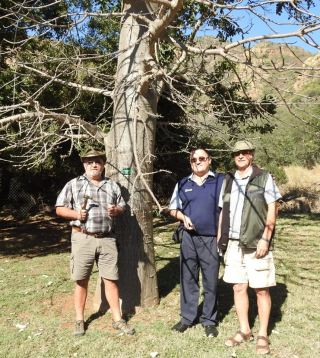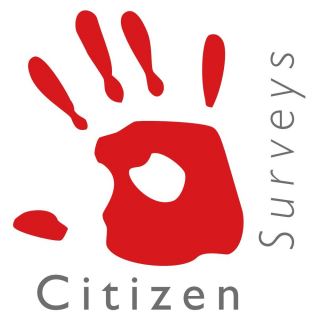Undocumented specie of Dragonfly found in Swadini Nature Reserve.
In Limpopo at Swadini, A Forever Resort an undocumented Dragonfly has been found and celebrated. This is the first time that this Dragonfly has formally been documented in the country; needless to say, it is also good news for the Limpopo ecosystem.
Earlier this year Swadini started a project with the aim of understanding the ecosystem in and around the Resort ultimately exposing guests and students to a wealth of knowledge. The project was started in partnership with Neels Snyman, Flip du Plessis as well as Dries de Vries, guests staying on the Resort documenting and monitoring this new species. The Dragonfly named Eastern Scissortail was found and photographed by Antoinette Snyman on the 20th of May 2019.
“Dragonflies and Damselflies play a key role in both the terrestrial and aquatic habitats. They are predators as both nymphs and adults feed on a variety of prey including nuisance species such as mosquitos, ants and biting flies. Dragonflies are also able to consume their own body weight in as little as half an hour. Dragonflies’ are nature’s way of pest control – natural alternative”, said Nols van der Berg, General Manager at Swadini. van der Berg added some fun facts about these interesting little creatures:
- Dragonflies were some of the first winged insects to evolve, some 300 million years ago.
- There are more than 5,000 known species of dragonflies
- In their larval stage, which can last up to two years, dragonflies are aquatic and eat just about anything—tadpoles, mosquitoes, fish, other insect larvae and even each other. Dragonflies are expert fliers. They can fly straight up and down, hover like a helicopter and even mate mid-air. If they can’t fly, they’ll starve because they only eat prey they catch while flying.
- Dragonflies, which eat insects as adults, are a great control on the mosquito population. A single dragonfly can eat 30 to hundreds of mosquitoes per day.
- Some adult dragonflies live for only a few weeks while others live up to a year.
The Resort is not only home to the newly documented Eastern Scissortail Dragonfly, but also home to other unique Dragonflies such as Painted Sprite, Great Sprite, Lined Claspertail and Spined Fairytail.
Unique trees located at Swadini include Lebombo clusterleaf, Carrot-tree, Mitzeeri, Forest fever tree and Matumi. Unique birds can also be found in Swadini and include Crowned Eagle, African Black Duck, African Finfoot, Half-collared Kingfisher as well as the Trumpeter Hornbill. Wild animals that can be found in, and around the Resort include Leopard, Kudu, Hippo, Crocodiles, Waterbuck, Bushbuck, Meerkat, Duiker, Mongoose and Impala.
“Overall, our vision is to leave behind a wealth of knowledge, understanding and awareness for the unique Fauna and Flora in and around Swadini and the Blyde River Nature Reserve for future generations”, van der Berg concluded.
Sishen Iron Ore Company-Community Development Trust (SIOC-cdt) invests in social impact research with a difference
In November 2018, the Sishen Iron Ore Company – Community Development Trust (SIOC-cdt) contracted Citizen Surveysto conduct a needs analysis within the five local municipalities in which it operates. This will assist the Trust to update its Community Development Strategy and ensure that it can have a meaningful impact on these Northern Cape and Limpopo communities.
Established in 2006 by Kumba Iron Ore Limited to invest in the development of the communities in which the company operates, SIOC-cdt derives dividends from its shareholding in the Sishen Iron Ore Company (SIOC) and has spent over R1-billion so far in community development projects.
These projects seek to strengthen the communities surrounding its mining activities and ensure that they are sustainable once these mines close.
“SIOC-cdt aims to have a genuine and lasting impact on these communities as a result of its community development projects, rather than relying on metrics such as how much money it has spent or projects it has funded,” says Managing Director of Citizen Surveys, Washeelah Kapery.
SIOC-cdt is active in five local municipalities. Four of these are in the Northern Cape and surround the Sishen Mine in Kathu and Kolomela Mine in Postmasburg. These are the Joe Morolong, Gasegonyana, Gamagara and Tsantsabane local municipalities. While the Thabazimbi Mine in Limpopo was recently sold to ArcellorMittal, SIOC-cdt has legacy projects and thus an obligation to communities within the Thabazimbi Local Municipality.
“We specialise in large-scale national surveys that investigate the perceptions, needs and experiences of South Africans,” continues Kapery, “and we have invested into developing research systems that enable us to provide strategic insights and solutions.”
“SIOC-cdt is in the process of updating its Community Development Strategy for the next five years and wants to ensure that its community development strategies and projects are based on sound research into the needs of the different communities,” says Vusani Malie CEO of SIOC-cdt. “Citizen Surveys will be conducting household surveys with communities, interviews with community leaders and subject experts, and integrating information from other data sources (e.g. Stats SA, municipal IDPs) into the findings. This will create a solid foundation to provide planners with the information they need to prioritize sustainable development projects to offer in a community. In this way, projects can be designed to alleviate real social and economic problems”.
The research will commence in mid- December 2018 and will run until the end of February 2019. Once this research has been completed, SIOC-cdt will make it available to other organisations engaged in social development within these communities.



